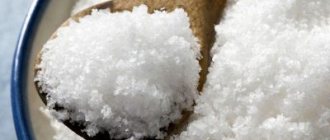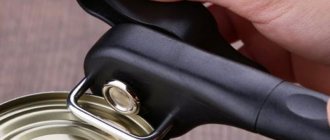Over time, any snow-white material becomes dull and faded. It loses its presentable appearance, turns yellow or gray. In addition, if washed incorrectly, the fabric may fade and acquire a different shade or even color. Transparent organza is no exception.
It is important to use only safe methods and means to restore color so as not to damage the material. In this article we will learn how to bleach organza tulle and other products made from this fabric. Let's look at how to get rid of grayness and yellowness at home quickly.
Features of the material
Organza is a popular material when creating wedding and evening dresses, theater dresses, curtains and drapes. In addition, the fabric is used for making flower arrangements, ribbons and bows, and decorating the hall. Organza will organically fit into every interior and divide the room into zones. And if you hang organza curtains, the room will become airy and the light will be soft and even.
Organza is made from spun viscose, polyester or silk. The first two options are the cheapest and most accessible. After processing, the fabric can be shiny or matte, can shimmer in different shades or be plain. In addition, embroidery and patterns are made on the material.
Light and airy organza looks fabulous and beautiful, creating a real holiday. It is a thin and light, transparent and airy fabric. Despite these properties, it is quite rigid, durable and elastic. The fabric holds its shape well and retains its original appearance, so it is used for sewing fluffy skirts and dresses.
Most often, organza is white, as it is used to make curtains, wedding dresses, veils, and school bows. With prolonged use and storage, or improper care, the material gradually becomes dull, gray or yellow. If washed or ironed incorrectly, yellow marks and stains remain on the fabric. In this case, it is necessary to bleach the organza. Let’s look further at how to do this correctly.
How to bleach curtains at home
Experienced housewives know that washing tulle is not always the best way to bleach it. It can only aggravate the situation by damaging the structure. But effective methods of bleaching curtains still exist. But their use depends on the material from which the curtain was made.
Nylon curtains
Nylon curtains do not lose their relevance for a long time. Even the great competition of fabrics made from natural and artificial fibers has not driven them out of use.
Nylon curtains are durable and wear-resistant, have an affordable price
Main features of rigid material:
- high strength;
- elasticity, thinness;
- lightness, weightlessness;
- smoothness, shine;
- resistance to external odors and moisture.
With the right approach, nylon curtains look no worse than expensive organza
The disadvantages of the fabric are the accumulation of static electricity and fading in the sun, causing the appearance of yellowness.
There are several ways to return nylon tulle to its pristine purity.
Cleaning nylon tulle
Modern bleaches and stain removers are used to remove yellow stains from nylon tulle. The most affordable way is to use white. It must be diluted in a sufficient amount of water (5-7 l) in accordance with the instructions. Dip the tulle into the resulting solution. Leave the fabric for half an hour. Then you need to rinse it and dry it.
Whiteness acts so aggressively on fabric that in subsequent washes you will have to use only it.
Remember! After such a wash, you will have to remove the smell (characteristic of bleach) yourself. This can be done using fabric softener or a solution containing a small amount of vinegar. After washing the fabric in bleach, you will have to accept the fact that no other cleaning methods will help.
The method of cleaning nylon curtains with other modern means is similar. The amount of stain remover and the waiting time for the result depends on the specific product. Therefore, before using the liquid, you should carefully read its instructions.
It is very convenient to use a liquid stain remover to remove dirt.
To remove heavy stains and completely whiten curtains, you can apply a concentrated stain remover directly to the stained area. Then you need to immerse the entire fabric in the liquid.
Attention! Follow cleaning instructions carefully. It is better to use less than indicated rather than more. Otherwise, there is a possibility of saying goodbye to your favorite curtain forever.
Organza curtains
Organza is often used to create indoor veils. This is due to its following positive characteristics:
- airiness;
- high thread density;
- versatility, practicality;
- wide range of colors and patterns;
- several surface options (glossy, matte);
- texture (smooth, compressed).
Organza curtains are chosen by those who love bright rooms and want to enjoy the view from the window.
This delicate fabric comes in many colors and shades.
The color of the material can be matched to any interior style.
But tulles made from this material also do not last forever and turn yellow no less than nylon ones.
Bleaching organza tulle
You can clean organza curtains using store-bought products. Particular attention should be paid to liquids containing active oxygen (eg Vanish). They carefully clean the fabric without damaging its structure.
Attention! Do not use aggressive solutions; you must carefully read the instructions.
In the instructions, the manufacturer must indicate the recommended temperature conditions and acceptable types of fabrics.
Unlike nylon, organza is more sensitive. She doesn't like high temperatures. Therefore, the maximum degree of solution should be no higher than 35 °C.
Recommended temperature for bleaching organza is 30–35 degrees
Remember! Organza may fade when washed. Therefore, before carrying out the procedure, it is necessary to take into account its color and the amount of cleanser (indicated in the instructions).
With proper care, an organza curtain will last for many years without losing its original freshness.
Five ways to whiten organza
- Soak the item for 6-8 hours in salted cold water. To prepare the solution, use two to three tablespoons of salt per ten liters of water and add a little suitable washing powder or gel. Then you need to wash the clothes or organza tulle in the washing machine or by hand as usual. Rinse things three to four times;
- Prepare a solution with brilliant green. To do this, add ten drops of the product to a glass of water and stir. Leave for two minutes. If a precipitate forms, stir the mixture again, otherwise green streaks will remain on the fabric. First you need to wash the tulle or clothes using the usual method, and during the last rinse, add the prepared composition to the water. Place the products in the solution and leave for three minutes. Lightly wring out the material without twisting and hang to dry. As a result, it will become snow-white and fresh, and will return to its former presentable appearance;
- First you need to wash the organza by hand. Then add a cap of blue to the rinse water and stir the composition thoroughly. Rinse the product first in the resulting composition, and then in clean water. When washing in an automatic machine, a cap of blue is added to the rinse aid compartment. By the way, bluing will help to effectively bleach linen and dye jeans;
- Laundry soap is an effective and affordable remedy for removing yellowness and whitening. Grate the block on a medium grater, add to water and bring to a boil. Mix the resulting soap composition with cool water and soak the yellowed items in the warm solution. Leave for five to seven hours. After the procedure, you need to wash the fabric by hand and rinse three to four times;
- After the main wash, soak the organza in a starch solution for a few minutes until it turns white. To do this, dilute 250 grams of starch with warm water. Dip the product in the resulting mixture, and then rinse in clean water. As a result, the material will turn white and hold its shape well. In addition, after such treatment, less dust is attracted to the fabric, which prolongs the freshness and cleanliness of things and simplifies subsequent washing.
Features of caring for organza
Organza holds its shape well and is a durable material. It can be bleached at home quickly from a yellow or gray tint without fear of spoiling it. When whitening, it is important to carefully follow the instructions, especially if chemicals are used.
The fabric can last for many years, but for this it must be properly cared for. Basic moments:
- wash at a temperature not exceeding 40 degrees;
- When washing in a machine, the product is wrapped in a linen bag;
- After washing, the fabric should not be twisted;
- dry flat, avoiding direct exposure to the sun.
Even with proper care, the product will need to be bleached periodically. Tulle darkens, especially curtains, from dust, cigarette smoke, and kitchen soot. Things get dirty if there are small children or animals at home.
View this publication on Instagram
Publication from Curtains / Curtains / Kharkov (@1.gardinyshtory) February 7, 2020 at 9:09 PST
Whitening Recommendations
Do not use ammonia or hydrogen peroxide for bleaching as they are not suitable for synthetics and delicate fabrics. In this case, you need to use hot water with a temperature of 60 degrees, which is unacceptable for such materials. When washed this way, they become deformed, shrink and lose their attractive appearance. Hydrogen peroxide and ammonia are used for natural fabrics. They can bleach linen and cotton.
Use bleach with caution. Choose oxygen-containing compounds, as they have a gentle and gentle effect. At the same time, they wash quickly and efficiently. Do not wash organza using chlorine bleaches!
Do any whitening procedures in water with a temperature of up to 35 degrees. To keep the fabric white and fresh for a long time and acquire a beautiful shine, when rinsing, add two teaspoons of table vinegar per liter of water. After bleaching, do not iron the organza, but let the material dry and smooth out under natural conditions!
Do not twist or wring the organza too much. Be sure to read the label and follow the recommendations. It is important to wash, iron and dry your organza correctly to keep it white.
What is prohibited to use when bleaching organza
Improper bleaching can irreversibly damage the product.
- Organza does not tolerate high temperatures. It cannot be washed at temperatures above 40 degrees, otherwise the material will become deformed.
- It is not advisable to use chlorine bleaches as they damage the fabric structure.
Before bleaching a curtain with chemical bleaches, you should study the information on the label. If it states that the product is suitable for organza, you can use it.
How to wash white organza
In order for white organza to retain its color and attractive appearance for a long time, you need to wash the product correctly. It's better to do this manually. Select the appropriate detergent for the type and color of fabric. Suitable options would be liquid products, shampoos and gels. How to choose a good washing gel, see here.
Before washing organza curtains or other items, dilute the detergent in warm water and soak the item for two hours. After this, rinse lightly, straighten the material and leave to dry under natural conditions indoors or outdoors.
Products with embroidery, beads and other decorative details can only be washed by hand. Or you need to remove the decor first. You can wash organza in a washing machine on a delicate cycle at temperatures up to 40 degrees with a spin speed of up to 500 rpm or without spinning.
Lightly wring out washed items. It is recommended to dry organza in a vertical position. Curtains and bulk items are hung on a rope, clothes are hung on hangers. It is important to carefully straighten and smooth the material with your hands and leave it to dry away from batteries, sunlight and electrical appliances.
Organza for curtains - types and characteristics
Organza is usually made from synthetic threads or a combination of synthetics and natural fibers. This fabric may include:
- polyester threads - thin, durable, specially cut to give them a spectacular shine;
- viscose fibers, made artificially from wood, are soft and hygroscopic;
- silk threads are smooth, durable and beautiful, used in the manufacture of the most expensive fabrics.
The canvases can be smooth, monochromatic, with color tints, patterns, embroidery, etching, or printing. To maintain their appearance for a long time, all types of organza require regular and proper care.
Do I need to iron organza?
There is no need to iron such delicate material. In this case, many are interested in how to wash organza so as not to iron it. Wash the product by hand or in a machine on a delicate cycle. Then, without squeezing, let the water drain. After this, hang the curtains and organza tulle on the windows, and the clothes on the hanger. Organza will dry in a short time and smooth out under its own weight.
If you don't want to iron and wash curtains or bulky organza clothes, use steaming. Run a steam generator or an iron with a vertical steam function over the material, holding the device at a distance of 15-20 centimeters from the fabric.
In addition, you can hang clothes over a bathtub or a container of boiling water. It is important that the hem of the product is at some distance from the water. Steam treatment will smooth and clean the material, eliminate folds and creases, and remove dust and stains. This method is great for smoothing out a wedding dress or veil.
If you do decide to iron the items, use only the minimum heating temperature of the iron. Otherwise, yellow marks or even burnt areas will remain on the material. It is better not to iron dresses and skirts with a lot of folds, but to wash them without spinning and hang them on hangers in the room or in the fresh air, and leave them to dry completely.
Methods for bleaching tulle from different types of fabrics
Various means are used, taking into account the composition of the material. Individual methods are often used for synthetic and natural fabrics. This is due to the structure of the material.
Organza
The fabric is characterized by moderate rigidity. This is a transparent material, it is made from various raw materials: polyester, silk, viscose. The main difference is the technique of weaving the threads. Organza is washed at a temperature not higher than +40°C. A higher temperature will cause a change in structure. To whiten organza tulle that has turned yellow or darkened from soot and soot, you can consider the following remedies:
- blue;
- brilliant green;
- salt;
- hydrogen peroxide;
- ammonia.
Not all folk remedies bleach such material; some of them act aggressively and therefore cannot be used. Organza cannot be twisted. For the same reason, use a delicate wash program, without spinning.
How to bleach nylon tulle?
Recommendations for caring for nylon are the same as for the option discussed above: do not use hot water and aggressive agents, it is better to avoid squeezing. The optimal temperature regime is up to +30°C. The material can be washed by hand. If the automatic machine’s functions do not include a “delicate spin” mode, it is permissible to set the speed to 400 rpm.
To whiten white nylon tulle, you can take home remedies to get rid of yellowness:
- Saline solution: 10 liters of water, 1 cup of salt. You need to soak the material.
- A product based on blue or brilliant green: prepare a weak solution.
- You can bleach dirty tulle using potassium permanganate: take a small amount of fractions and 3 liters of water, it is important to get a slightly pink substance. To this product you need to add laundry soap, which is pre-crushed (1/2 briquette), the mixture needs to be shaken by hand until foam forms. The nylon is left for 30 minutes.
After soaking the nylon, you can proceed to the second stage - washing in an automatic machine or manually.
Tulle veil
If you are looking for ways to bleach such material, you should consider recipes based on soap, salt, starch, soda, blue, and brilliant green. Tulle is a mesh with patterned weaving. In production, polyester is used, much less often - silk threads. Such material is easy to damage, so it is better to do without squeezing. Recommended temperature within +30…+40°С.
Chiffon curtains
They are characterized by low strength, so you cannot use the spin washing mode. You can bleach chiffon with laundry soap and salt. Washing is done in cool water. To prevent grains from damaging the material, the salt must be fine-grained.
Linen tulle
It is acceptable to use ready-made bleaches. However, it is recommended to use them as rarely as possible. This is due to the aggressive action of such agents. You can refresh linen curtains with a solution based on ammonia. This is a suitable product for natural materials.
Batiste
Tulle is a type of cotton fabric that is resistant to high temperatures. This type of tulle can be washed and bleached by boiling it with laundry soap, as well as a solution based on starch, ammonia and hydrogen peroxide.
Kiseya
Kisey is a cotton material (made from cotton, but it is distinguished by a non-standard weaving technique), you can use the same bleaching methods as for cambric (ammonia-based solution). When washing, only powder is used, without additives. The bleach is used separately, before or after removing stains from the fabric.
Mesh (tulle)
Tulle is moderately durable and is made from synthetic fiber (polyester thread). Tulle can withstand the effects of more aggressive agents, but they should not be abused for the same reasons: the fabric quickly loses strength. A good solution for the mesh would be a saline solution in combination with washing powder. It is necessary to soak the product for a while until improvements are visible. Then you can simply rinse it.
How to iron organza correctly
Ironing is performed at the minimum heating temperature of the iron and only from the wrong side. In this case, the material must be wet. After washing, when the water has drained, place the item on a thick fabric, such as a towel. Cover the top of the product with gauze, tissue paper, cotton or other thin fabric. Then iron the reverse side with a warm iron.
Press the iron firmly onto the fabric, but do not hold it in one area for too long. Iron each place several times. During the process, do not use hot steam, otherwise the organza will ripple. Wide curtains can be folded in several layers. Move the long tulle gradually behind the back of the ironing board, stroking section by section. How to properly iron curtains, see the link.
How to carefully bleach old tulle from gray stains and yellowness?
In old curtains, dirt managed to penetrate deep into the structure of the threads and became ingrained under the influence of high temperatures (for example, curtains in the kitchen). Removing them will not be easy. It is also difficult to bleach old yellowed tulle due to significant damage to the fibers. The fabric can tear at any time during intensive washing. Instructions for removing yellowness:
- First, the curtains are washed by hand or in an automatic machine. Choose a delicate mode, without spinning.
- If the fabric can withstand high temperatures, you can improve the result by using the boiling method with laundry soap.
- The tulle is soaked in a solution based on ammonia and hydrogen peroxide.
- You can bleach sun-bleached kitchen tulle with salt. There is no need to soak the product.
- The material is rinsed in a starch-based solution.
Washing organza tulle curtains in an automatic washing machine
This thin fabric, if you follow simple rules, can withstand machine washing quite well, but only in modern automatic machines in which you can set the “Delicate Wash” setting. To preserve the decorative properties of the product you must:
- Load the curtain into the machine in a special mesh bag - purchased or sewn from gauze.
- Set a delicate wash program that provides low washing temperatures (+30...+35 °C) and spin speed. If it is not possible to set low speeds, it is better to turn off the spin completely.
- Use low-foaming detergents that are designed for use in front-loading automatic machines. Liquid gels are best suited for this purpose.
- Set the “Extra Rinse” mode to thoroughly remove detergent from the material structure.
- After washing, hang the curtain in a vertical position so that the water drains on its own. Manual spinning is strictly prohibited.
Did you like the curtains? You can order the same in the Bedroom section
Tips for washing curtains
- It will be better to rid the curtains of grayness if you shake the dust off the tulle several times before bleaching.
- The fabric from which the curtains are made does not like hot water. At high temperatures, an irreversible change in the structure of the material occurs. The temperature of the liquid cannot be higher than 60 degrees, and for veils, organza and nylon no higher than 40.
- It is correct to wash and bleach tulle in a machine only on a delicate cycle. Do not use "spin". It is advisable to use a special bag or pillowcase for washing curtains.
- After bleaching, you should not immediately iron the curtain. Let the water drain and you can hang the curtain on the window.
- If you want to use chemicals, carefully read the instructions for use so as not to spoil the material.
- Dip the curtain into the bleach solution until it is completely covered with liquid. If the fabric is immersed unevenly, yellow spots will appear on the material.
Now you know how to bleach tulle at home, and what products to use to achieve the best result. To properly wash your favorite tulle and make the curtain snow-white, it is not at all necessary to use dry cleaning services, just remember the simple but effective products that are always at hand.
How to make fabric turn white using household chemicals?
Household chemicals will help quickly return tulle to its former shining whiteness. There are many advantages of this type of washing:
- bleaches remove any stains and dirt;
- washing with chemicals is easier, faster and more effective (folk remedies do not always help achieve the desired cleanliness effect).
It is strictly forbidden to bleach tulle with chlorine-containing compounds. After such washing, there is a high risk of final damage to the product.
The most acceptable option is oxygen-containing bleaches, which contain particles of hydrogen peroxide. It is they that dissolve upon contact with water, forming bubbles that remove particles of dirt and gray plaque from the fabric.
When washing by hand, oxygen-containing bleaches are dissolved in water (dosage specified by the manufacturer). Then the tulle is dipped into the resulting solution.
After half an hour or an hour, the curtain can be removed, rinsed and hung to dry. When machine washing, oxygen bleach is added to a special compartment of the machine along with the powder.
Folk remedies
Before the advent of special chemistry, housewives used improvised means. They are still popular now, as they have a number of advantages: low cost, availability in the house, safety of use.
Folk remedies:
- salt (without iodine);
- soda;
- blue;
- starch;
- laundry soap;
- hydrogen peroxide;
- brilliant green;
- white;
- ammonia.











